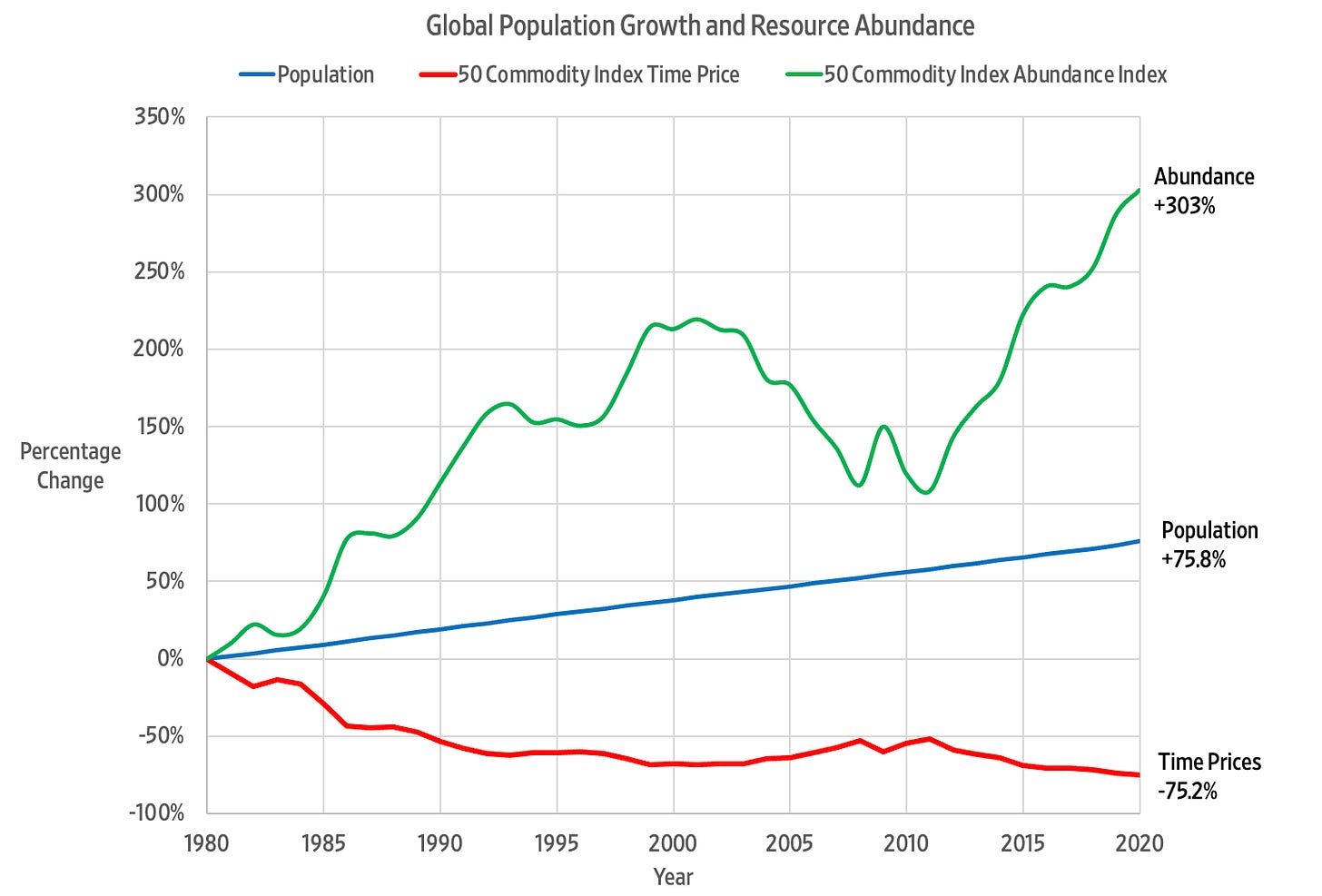Wealth & Poverty Review Population Growth and Resource Abundance
Contrary to popular belief, personal resource abundance has increased four times faster than population growth in the last 40 years. Originally published at SubstackAre resources becoming more or less abundant? To answer this question we analyzed the change in the time prices of 50 basic commodities from 1980 to 2020. Recall that 1980 was the year Julian Simon and Paul Ehrlich entered into their famous 10-year $1,000 bet on the price of five metals. The 50 commodities we analyzed included items from energy, food, materials, minerals, and metals. We were astonished at what we discovered. Not a single commodity had become more expensive. Iron ore fell by 24.4 percent while sugar fell by 86.2 percent. The average time price decreased by 75.2 percent. A 75.2 percent decrease in the time price means that for the time required to earn the money to buy one unit in 1980 you would get 4.03 units in 2020. This represents a 303 percent increase in personal resource abundance.
When time prices decrease, abundance increases geometrically. For example, when a price decreases by 50 percent, you get two for the price of one. If a price falls 75 percent you get four for the price of one. A 90 percent drop means you get ten for the price of one.
During this 40 year period global population increased 75.8 percent from 4.45 billion to 7.8 billion. Every one percent increase in population corresponded with a one percent decrease in time prices. You can also say that every one percent increase in population corresponded with a four percent increase in personal resource abundance. Contrary to popular opinion, more people are making resources much more abundant.
In 1990 Julian Simon won $576.07 on his bet with Paul Ehrlich. The empirical evidence on the increasing abundance of 50 basic commodities powerfully confirms that he would win the bet today.


